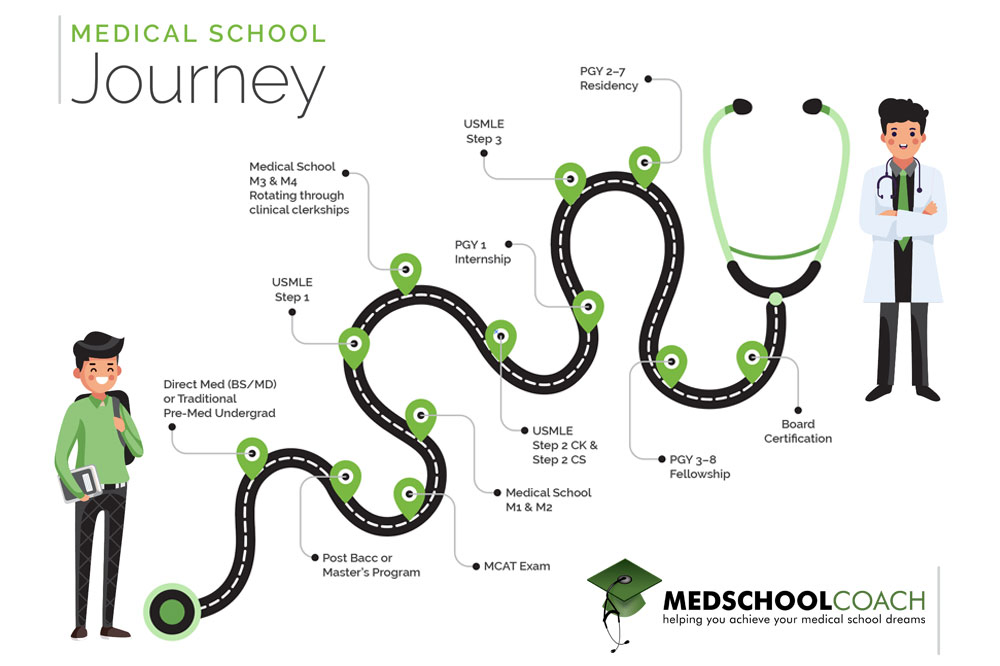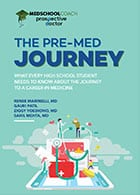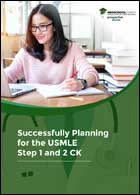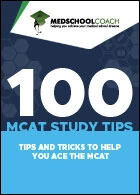
Becoming a doctor is a rewarding, but long process. We’re here to help you learn the steps to becoming a physician, as well as understand the terms and definitions crucial to succeeding at the pre-med, admissions, and medical school and beyond stages.
Pre-Med Definitions
For students still in high school, MedSchoolCoach helps students target the right pre-med school or BS/MD program. For students already in college, we guide them through the steps it takes to become a physician. Here are some of the key words you may hear as a pre-med student or parent.
BS/MD Program
A Bachelor of Science (BS) and Medical Doctor (MD) combo is an undergraduate institution and a medical school partner that allows students to gain admission to both straight out of high school. Many BS/MD programs take eight years, the typical minimum amount of time a student would normally spend getting a BS and MD through separate programs.
Pre-Med Undergrad
Pre-med is a term college students use to show they plan on attending med school and are taking the right classes. Pre-meds can major in whatever subject they want and just take the required classes needed to apply to med school.
Post Bacc
A post-baccalaureate program is completed after graduation from college for a variety of reasons: to complete a second BA/BS degree, to attain a graduate certificate, to complete med school prerequisite courses, or to raise a GPA. Most post-baccalaureate programs take 1 to 2 years to complete.
Read Next: Is a 3-Year Medical School Right for You?
MCAT Exam
The Medical College Admission Test (MCAT) is developed and administered by the AAMC, and is a standardized, multiple-choice exam created to help medical school admissions offices assess problem solving, critical thinking, and knowledge of natural, behavioral, and social science concepts and principles prerequisite to the study of medicine.
CASPer Test
The Computer-Based Assessment for Sampling Personal Characteristics (CASPer) is an admissions test that measures traits like professionalism, ethics, communication, and empathy. It’s a psychological test with realistic hypothetical scenarios that asks what you would do when faced with particular situations—and why.
Medical School Application Definitions
For students already in college, MedSchoolCoach helps put the best plan in place for their medical school acceptance. Here are the key organizations and services that manage the medical school admissions application process.
AAMC
The Association of American Medical Colleges (AAMC) administers the MCAT exam. They focus on transforming health care across medical education, patient care, medical research, and diversity, inclusion, and equity in health care.
AACOMAS (for DO)
The American Association of Colleges of Osteopathic Medicine Application System (AACOMAS) is the application process for those applying for a Doctor of Osteopathic Medicine (DO) in medical school.
AMCAS (for MD)
The American Medical College Application Service (AMCAS) is the AAMC’s centralized medical school application processing service for those applying for a Doctor of Medicine (MD) in medical school.
TMDSAS
Texas Medical & Dental Schools Application Services (TMDAS) is the common application that prospective professional students can use a to apply to all public medical, dental and veterinary schools in the state of Texas.
ERAS
The Electronic Residency Application Service (ERAS) is the centralized online application service students use to deliver their application, along with supporting documents, to residency programs.
Med School Definitions
Once a student is in medical school, we help students maximize their board scores and plan for the residency of their choice. Here’s the lingo med students need to know to master the boards.
M1, M2, M3, M4
M1 = First-year medical student
M2 = Second-year medical student
M3 = Third-year medical student
M4 = Fourth-year medical student
USMLE / Medical License Exam
The United States Medical Licensing Examination (USMLE) assesses a physician’s ability to apply knowledge, concepts, and principles, and to demonstrate fundamental patient-centered skills, that are important in health and disease.
USMLE Step 1
Step 1 tests mostly pre-clinical knowledge (basic science) and is typically taken after the second year of medical school.
USMLE Step 2 CK
Step 2 CK assesses clinical knowledge and is typically taken between the third and fourth years of medical school, sometimes later in the fourth year if you did well on Step 1 and do not want the Step 2 score to affect your residency application.
USMLE Step 2 CS
Step 2 CS assesses clinical skills and is a practical examination as you see a panel of standardized patients, conduct a medical interview, perform a physical exam, and integrate laboratory findings to arrive at a differential diagnosis.
USMLE Step 3
Step 3 assesses whether you can apply medical knowledge and understanding of biomedical and clinical science essential for the unsupervised practice of medicine, with emphasis on patient management in ambulatory settings. It is taken after the intern year of residency.
Beyond Med School Definitions
MedSchoolCoach helps medical students match into their desired programs after medical school. Here, we define the different phases to becoming a doctor, and continuing education as a skilled physician, even after you’ve graduated from med school.

Internships
Internships are the first year of training after medical school and are considered a minimum requirement to be eligible and qualify for a general license in medicine. For example, a PGY1 Internship is done Post-Graduate Year 1.
Related: 10 Questions Pre-Med Students Need to Ask When Shadowing a Doctor
Residency
After completing medical school, typically doctors enter a residency program for an additional 2 to 7 years of education and training. A family practice resident could serve 2 years of residency while a surgery residency may last 5+ years. If you do one year of an internship, your first year of residency would make you a PGY2, or Post-Graduate Year 2.
Related: Average Residency Salary by Specialty + Job Level
Fellowship
A fellow is a physician who has completed their residency and elects to complete further training in a specialty. The fellow is a fully credentialed physician who chooses to pursue additional training, the fellowship is optional and is not required to practice medicine, but is necessary for training in a subspecialty.
Attendings
An attending physician has completed their training and is practicing independently in their chosen specialty. This term is typically used at teaching facilities to differentiate fully credentialed senior-level physicians from junior physicians who are still completing their higher education.
In the hierarchy of physicians, the attending is at the top under only the physicians who run the hospital itself. Attendings may also be known as staff physicians or a rendering doctor and may be trained as an MD or a DO.
Board Certification
Various specialties have “boards” which are used to further signify and accredit physicians as trained in a particular area. These tests can be oral or written or a combination. Every specialty has different requirements and formats. Some are multiple years that require retesting every few years to maintain certification. These are typically taken after residency and fellowship. Examples include American Board of Radiology or American Board of Internal Medicine.
Need exam tutoring or admissions advising help?
Learn how private tutoring and advising from the best coaches in the country can improve your odds of getting into medical school, acing the boards, and becoming the physician you’ve dreamt of!





